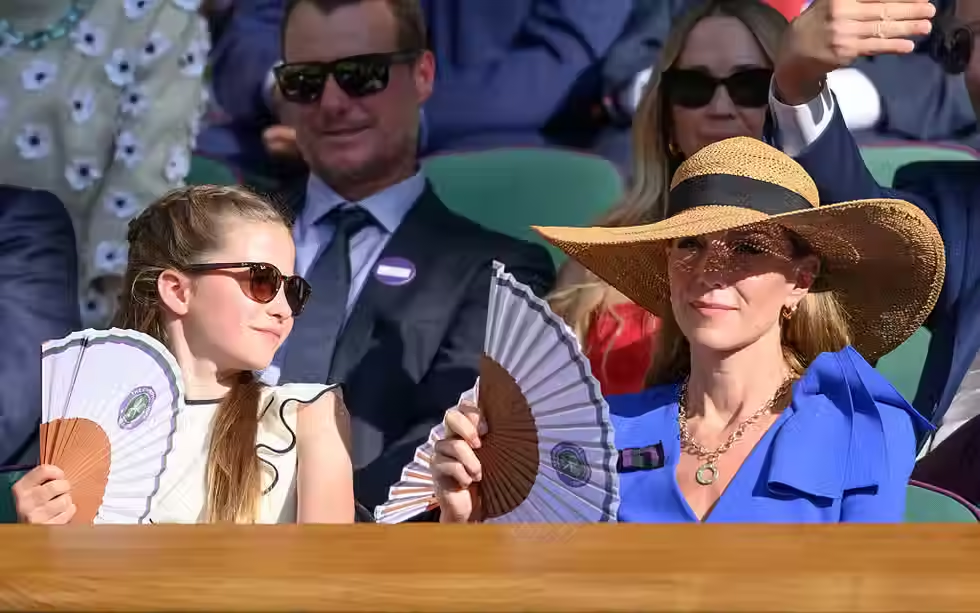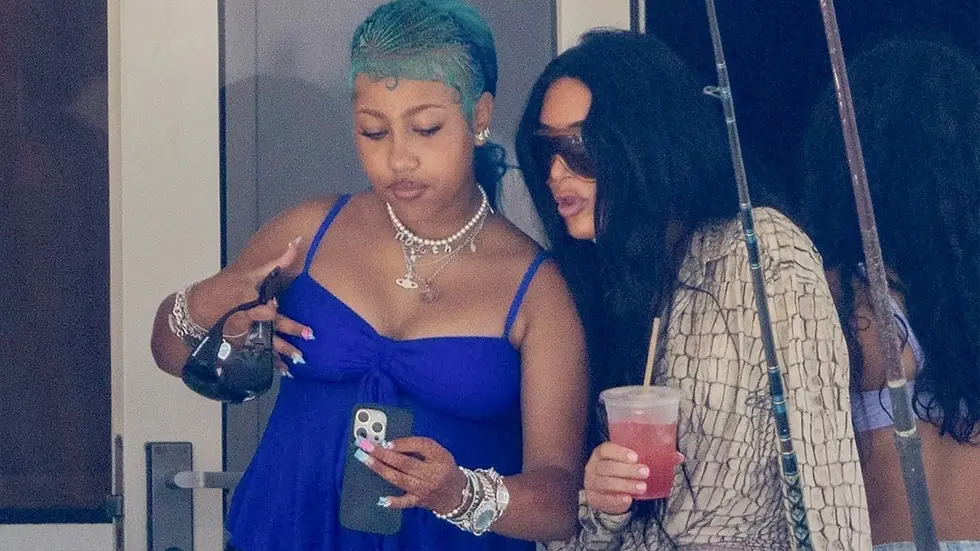What Happened to Girlhood? Exploring The Fall of Little Girl's Style
- TheSwishCompany

- Jul 23
- 5 min read
Meanwhile, Arabella Kushner and Princess Charlotte Are Quietly Leading a Return to Dressing Your Age

Somewhere in the last two decades, we stopped letting little girls look like little girls.
Instead of smock dresses and hair ribbons, now we see crop tops and contour on girls as young as 8 all over the internet and out in public. Instead of cardigans and Mary Janes, there are toddler-sized leather jackets and mini handbags. Scroll through Instagram or walk the aisles of a trendy children’s store, and you’ll see it: a curated aesthetic applied to girlhood that has less to do with being a child—and more to do with looking like a mini-woman.
But girlhood was never meant to be a runway, and in a time where childhood is being flattened, styled, and branded for clicks, two young girls—Arabella Kushner and Princess Charlotte—stand out for the very reason that they don’t stand out. They simply dress their age. And in doing so, they carry a quiet dignity that’s becoming increasingly rare, especially in the public eye.

The Disappearance of Age-Appropriate Style
In past generations, there was an understood progression to how girls dressed: baby clothes came before bows and play dresses, which evolved into school uniforms and softer, sweeter after school styles. There was charm in the childlike—Peter Pan collars, puff sleeves, gingham prints. These weren’t costumes. They were signals of innocence and ongoing formation, separated from the woman they would one day become.
Even today, Prince George and Prince Louis of Wales are traditionally dressed in shorts rather than trousers because of a royal custom that signifies their stage of childhood that has been upheld for generations. Likewise, in more historically ordered cultures, young girls wore shorter, simpler dresses until reaching adulthood, at which point a longer hemline marked the transition into womanhood. These sartorial shifts weren’t arbitrary; they were meaningful rites of passage that honored the stages of growth with dignity and distinction.

But today, we’ve collapsed that entire arc. Babies are dressed like influencers. Preschoolers wear slogan tees with sarcastic undertones. And by the time a girl is nine, her wardrobe mimics whatever’s trending on TikTok (of which, sadly, most young girls are already addicted). There’s no visual distinction between stages of life, no reverence for what it means to grow into womanhood rather than perform it prematurely.
These days, style has become something to exploit for young women—not something to cultivate.
That’s what makes girls like Arabella and Charlotte so striking. Not just because they’re famous, but because they remind us how we've forgotten that childhood isn’t supposed to look like adulthood in miniature.
Arabella Kushner
Though her public appearances are few, 14 year old Arabella Kushner’s presence has always carried the same quiet current as she grew in front of our eyes as America's First-Granddaughter. Whether accompanying her parents to diplomatic events or appearing in family snaps on her mom Ivanka Trump's Instagram, Arabella’s clothing reflects her season of life.
She wears what most girls used to—dresses with structure, classic cuts, and feminine details. When she was small she wore bows and frills, but now she wears clothing that fits her well, is an appropriate length, and on very formal occassions the slightest amount of makeup that is balanced for a young teen.
Her style choices aren’t flashy, nor do they chase trends. And that’s exactly the point. In a culture where everyone is trying to go viral, Arabella’s style has order, dignity, and still, some fun.


Princess Charlotte
Then there is Princess Charlotte, age 10, who in many ways has become the modern archetype of traditional girlhood. Under the careful eye of her mother, the Princess of Wales, Charlotte wears floral dresses, cardigans, smocking, tights, and bows. Her wardrobe doesn’t change with every trend, and yet she still has pink nails. Her style is consistent, thoughtful, and age-appropriate and she looks like a child, not a character.
But what’s more striking is how natural it looks on her. In a world where dressing like a girl is often reduced to caricature or costume, Charlotte shows that it’s still possible for feminine innocence to appear both modern and beautiful.
Catherine has not used her daughter as a branding tool or aesthetic prop. She’s not dressing her to impress adult women on the internet. She’s simply honoring the stage Charlotte is in, and even better--protecting it. That choice, quiet as it may seem, is profoundly countercultural (especially considering Charlotte's treatment by her mother versus that of her cousin, Lilibet of Sussex).

Why This Matters
You might wonder—why does this even matter? They’re just clothes.
But that’s precisely the problem. We’ve come to believe that clothing is meaningless, that aesthetics are neutral, and that what we wear says nothing about who we are. But historically, and especially in the formation of girls, clothing always carried meaning.
How a girl dresses shapes not only how others see her, but how she learns to carry herself. Does she learn that modesty can be lovely? That beauty doesn’t have to be loud? That softness and structure can coexist?
When children are styled to look like adults, they skip the formation of those lessons. They begin to see beauty as something performative, something earned through exposure or attention. But girls like Arabella and Charlotte remind us of deeper truths: that beauty can be formative and girlhood can be glorious—if we let it be.

A Mother's Role
It must be noted that neither Arabella nor Charlotte would stand out in this way if it weren’t for their mothers. Ivanka Trump and Catherine, Princess of Wales, have each taken deliberate and dignified approaches to motherhood that reflect the values of classical femininity—and those values shape not only how they carry themselves, but how they raise their daughters.
Ivanka, though a former fashion icon in her own right, has never treated Arabella like a public accessory. Arabella’s wardrobe choices suggest boundaries and intention as she is dressed like a young girl being formed, not an Ivanka mini-me molded for public consumption.
Ivanka’s embrace of polished, modest style—both personally and for her children—models a kind of restrained elegance that is increasingly rare among modern mothers.

Catherine, meanwhile, has long been admired for her ability to dress beautifully without being trend-obsessed. She deeply understands symbolism, and her children’s clothes (especially Charlotte’s) are always chosen with occasion and appropriateness that reflects their heritage in mind. She noticeably doesn’t confuse timeless with dated. Instead,she revives and upholds tradition with grace. And in doing so, she teaches her daughter that dressing well isn’t about seeking attention, but showing honor and respect to a duty higher than yourself.
In both cases, these mothers demonstrate that raising daughters to dress with dignity doesn’t have to be dull, restrictive, or old-fashioned. It can be a form of stewardship and ultimately, love.
This approach is easily contrasted with the lifestyle and style choices of Kim Kardashian's daughter, North West, who at age thirteen has been mistaken for a much older woman due to her rejection of classical femininity, modesty and restraint. Similarly, her actions are a reflection of her own mother who doesn't embody traditions with grace.

We’re not going to rebuild a culture of feminine dignity through Instagram trends or viral parenting hacks. But we can begin by recovering the lost art of dressing children in a way that reflects their stage of life—not the aspirations of adults projecting onto them.
It starts with a question for mothers, aunts, godmothers, and future mothers alike: What would it look like to let little girls look like little girls again? Not in a kitschy or outdated way—but in a way that gives space for innocence, charm, and the slow unfolding of maturity.
Arabella Kushner and Princess Charlotte offer a vision. Not because they’re perfect, but because they are living, breathing reminders that girlhood isn’t gone, it just may need a new dress. And maybe, by returning to the quiet rhythms of bows, smocking, and sweet simplicity, we can recover it.



_edited.png)










Comments